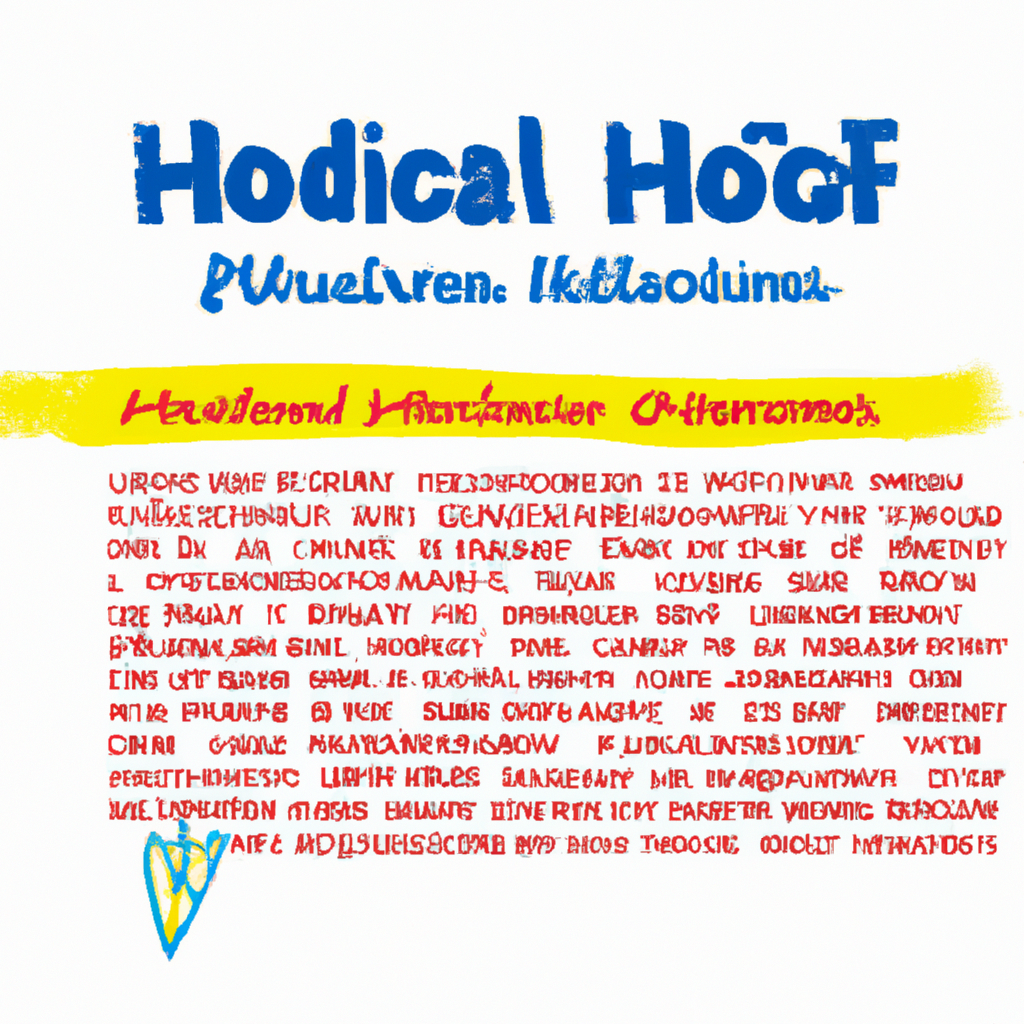Once upon a time, in the realm of democratic societies, a powerful force emerged from the depths of technology and communication – the media. With ink-stained fingers and silver-tongued reporters, it became the beholder of truth, the harbinger of information, and the guardian of democracy. And lo behold, amidst the ever-changing landscape of politics, the media assumed an irrefutable role in shaping the public’s opinions. From the pixelated screens to the crisp inked pages, it is through their lenses that citizens gaze upon the political stage, their minds molded by the words and images that dance before them. But in this captivating saga of the media’s influence on politics and the ardent minds of the populace, we embark on a quest for impartiality – to unravel the mystique that lies behind the media’s role and the precarious balance it attempts to strike between being informative and manipulative, a force for enlightenment or detriment, in our ever-volatile political landscape. So, gather around fellow citizens as we unveil the delicate dance between the media and politics, where truth mingles with cunning, and the seeds of public opinion are sown.
1. “Lights, Camera, Politics: Unveiling the Power of Media in Shaping Public Opinion”
The power of media in shaping public opinion cannot be underestimated. In today’s digital age, where information is just a click away, the media plays a pivotal role in influencing how we perceive the world around us. From television news broadcasts to social media platforms, the media has the ability to sway public opinion on a wide range of political issues.
One of the key ways in which the media shapes public opinion is through the selection and presentation of news stories. Media outlets have the power to choose which stories to cover and how to frame them, effectively controlling the narrative and influencing public perception. By emphasizing certain aspects of a story and downplaying others, the media can shape the way we understand and interpret events.
Moreover, the media has a significant effect on public opinion through the use of persuasive techniques such as propaganda and advertising. Advertisements, for example, are designed to evoke certain emotions and create associations between products or ideas. Similarly, political propaganda aims to manipulate public sentiment and sway opinion in favor of a particular political agenda. Social media platforms have only intensified the reach and impact of such techniques, as they allow for the rapid dissemination of information to millions of users at the click of a button.
Another important aspect of media influence on public opinion is the role of opinion leaders and influencers. These individuals, whether they are politicians, celebrities, or social media personalities, hold significant sway over their followers’ beliefs and attitudes. By leveraging their platforms to share their opinions, they can shape public discourse and influence how their followers perceive various political issues. Their endorsements or criticisms can have a ripple effect, ultimately impacting public opinion on a larger scale.
In conclusion, the power of media in shaping public opinion is undeniable. From the selection and framing of news stories to persuasive techniques and the influence of opinion leaders, the media plays a crucial role in shaping how we perceive and understand the world. As consumers of media, it is important for us to be critical and discerning, taking into account the various factors that contribute to the shaping of public opinion.

2. “From Newsrooms to Ballot Boxes: Examining the Ongoing Dance between Media and Politics”
In today’s constantly evolving landscape, the relationship between media and politics has become more intertwined than ever before. The influence of media on political processes is undeniable, as it constantly shapes public perception and helps shape the narrative around political events. Likewise, politics also has a profound impact on the media, as politicians strategize and harness the power of the press to advance their agendas.
Here, we delve into the ongoing dance between media and politics, exploring how they influence and interact with each other in an ever-changing dynamic:
The Media’s Role:
1. Shaping Public Opinion: Media has the power to shape public opinion by selectively covering or emphasizing specific stories, events, or viewpoints. With the rise of social media and the 24-hour news cycle, news outlets often compete for viewership, leading to biased reporting and sensationalism which can influence public perception and sway voters.
2. Agenda Setting: Media plays a crucial role in setting the agenda for political discussions. By highlighting certain topics or issues, media outlets prioritize certain concerns and determine what is deemed “newsworthy.” This, in turn, influences the debates and policy decisions made by politicians and political parties.
Politics and the Media:
1. Public Relations and Spin: Politicians and political campaigns often employ media as a tool for shaping public perception. Through carefully crafted messages and strategic media appearances, politicians seek to control the narrative, influence public opinion, and promote their own agendas.
2. Media as a Watchdog: The media serves as a watchdog, holding politicians accountable for their actions and decisions. Journalists investigate, fact-check, and expose wrongdoing, ensuring transparency in the political sphere and facilitating checks and balances.
As the interplay between media and politics continues, it is essential to remain critical consumers of news, recognizing biases and challenging narratives. Understanding the complex relationship between media and politics allows us to navigate this dance, empowering us with the knowledge to make informed decisions in the voting booth and beyond.
3. “Behind the Screens: How Media Becomes a Catalyst for Political Discourse and Public Perception”
In today’s digital age, media plays a crucial role in shaping political discourse and influencing public perception. Behind the screens, there is a complex mechanism fueling this phenomenon, which we are going to unravel in this section. So fasten your seatbelts!
1. The Power of Mass Media: Media, in its various forms such as television, radio, newspapers, and social media platforms, holds immense power to mold the public’s understanding and opinions. It sets the agenda for discussions, shapes narratives, and influences the topics that dominate political conversations.
2. Framing and Agenda Setting: Media outlets engage in framing by presenting information in a particular way to influence public opinion. They shape the narrative by focusing on specific aspects of an issue while downplaying others. Agenda setting is also a powerful tool, as certain topics receive excessive coverage, making the public perceive them as more important than others.
3. Biases and Partisanship: It is essential to acknowledge that media outlets often have their biases and lean towards specific political ideologies. This can lead to partisan reporting, where news is presented with a particular slant, potentially skewing public perception. It is crucial for consumers of media to be aware of these biases and seek information from diverse sources to gain a more comprehensive view.
4. The Rise of Social Media: Social media has revolutionized the way information is disseminated and consumed. It has become a breeding ground for political discourse, enabling people from all walks of life to voice their opinions. However, the viral nature of social media can also lead to the spread of misinformation and the echo chamber effect, where users are exposed only to like-minded perspectives, reinforcing their own beliefs.
In conclusion, media has transformed into a powerful catalyst for political discourse and public perception. Understanding the mechanics behind the screens can empower individuals to critically analyze the information they consume, identify biases, and actively engage in diverse discussions for a more informed democratic society.
4. “Democracy’s Watchdogs: Unraveling the Complex Relationship between Media and Politics
In today’s society, the role of media in politics cannot be undermined. The media acts as the watchdogs of democracy, keeping a close eye on the actions of politicians and the government, holding them accountable for their decisions and actions. However, the relationship between media and politics is not a simple one; it is a complex interplay of power, influence, and ethics.
Firstly, the media plays a pivotal role in informing citizens about political events, policies, and ideologies. Through news reporting, analysis, and investigative journalism, they serve as a bridge between the government and the public, giving citizens the knowledge and understanding they need to make informed decisions.
Furthermore, the media acts as a check on the power of politicians and government officials. By exposing corruption, misconduct, and abuse of power, they ensure that those in positions of authority are held accountable. This serves to maintain the integrity of the political system and reinforce the principles of democracy.
However, the relationship between media and politics is not without its complexities. On one hand, media outlets are expected to provide unbiased, objective reporting. On the other hand, media organizations are often influenced by various political and economic interests, which can potentially compromise their independence and impartiality. Striking a balance between these competing pressures is a challenge that the media constantly grapples with.
Moreover, the rise of social media has further complicated the relationship between politics and the media. With the advent of platforms such as Twitter, Facebook, and Instagram, politicians can directly communicate with the public, bypassing traditional media channels. This has both positive and negative implications. While it allows politicians to connect with their constituents on a more personal level, it also raises concerns about the spread of misinformation and the erosion of traditional journalistic standards.
In conclusion, the relationship between media and politics is a dynamic and intricate one. The media serves as the watchdogs of democracy, keeping a close watch on the actions of politicians and holding them accountable. However, this relationship is not without its challenges, as media organizations navigate the complexities of bias and influence. Furthermore, the advent of social media has added another layer of complexity to this relationship, shaping the way politicians communicate with the public and potentially altering the landscape of political reporting. It is essential for society to continue to examine and understand this complex relationship in order to ensure the health and integrity of our democratic systems.
In a world where so much of what we know and understand about politics comes from the media, it’s clear that media plays an important role in how we form our opinions on the subject. The media has the power to shape agenda, alter opinions, and help shape the public discourse for better or for worse. As citizens, it is our collective duty to be mindful of how we consume media, so that our opinions are both informed and nuanced. With that in mind, the potential for media to make a positive impact on politics is evident.




